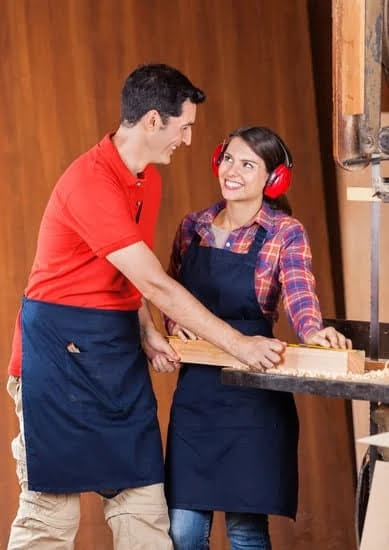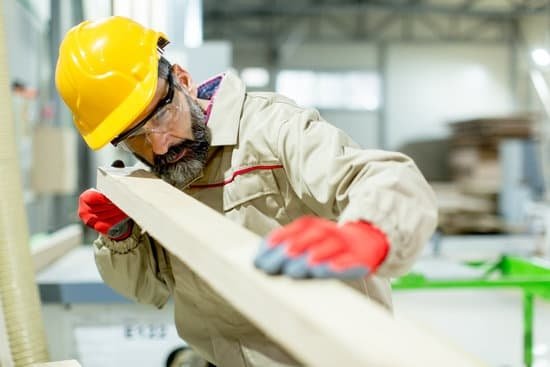Fine woodworking requires precision and consistency, which can be achieved with the help of a fine woodworking planer sled. A planer sled is an essential tool that aids in flattening and smoothing wood surfaces, ensuring a perfect finish for your projects. This device serves as a valuable asset for woodworkers looking to achieve professional-grade results.
Crafting intricate furniture pieces or detailed woodworking projects often involves working with different types of wood that may have uneven surfaces. By using a planer sled, woodworkers can ensure that their materials are perfectly flat and level before moving on to the next step of the project. This not only improves the overall quality of the finished product but also makes the woodworking process more efficient.
Whether you are a seasoned woodworker or just starting out, understanding how to effectively use a planer sled can make a significant difference in your woodworking endeavors. From improving accuracy to enhancing consistency in your projects, a planer sled plays a crucial role in achieving precise results.
In the following sections, we will delve into the benefits of using a planer sled, explore different types of designs available, and provide maintenance tips to help you make the most out of this invaluable tool.
Benefits of Using a Planer Sled
A planer sled is an essential tool for any fine woodworking enthusiast looking to achieve precise and consistent results in their projects. One of the key benefits of using a planer sled is its ability to improve accuracy.
By securely holding the workpiece in place and ensuring it remains flat throughout the planing process, a planer sled helps eliminate any inconsistencies or imperfections that may arise when working with irregular or curved pieces of wood. This results in smoother surfaces and more uniform thickness across the entire workpiece.
In addition to enhancing accuracy, a planer sled also helps maintain consistency in woodworking projects. Whether you are flattening large slabs of wood, creating matching boards for a tabletop, or simply ensuring that all your pieces are uniform in thickness, a planer sled offers unparalleled stability and control over the material being worked on. This level of consistency is crucial in producing high-quality furniture, cabinetry, or other fine woodworking pieces where precision is key.
Furthermore, using a planer sled can also prevent tear-out and minimize waste during the planing process. The even support provided by the sled reduces the likelihood of wood fibers tearing out as they pass through the planer blades, resulting in cleaner cuts and smoother surfaces on your workpieces.
This not only saves time by reducing the need for sanding and rework but also maximizes the yield from your materials by minimizing waste. For woodworkers striving for perfection in their craft, investing in a fine woodworking planer sled is truly worth it.
Types of Planer Sleds
When it comes to fine woodworking projects, having the right tools and equipment can make all the difference in achieving precise and high-quality results. One essential tool that often goes unnoticed but plays a crucial role is the planer sled.
A fine woodworking planer sled is a simple yet effective tool designed to help woodworkers achieve flat, smooth surfaces on their workpieces. It acts as a stable platform that supports the piece being planed, ensuring even cuts and consistent thickness throughout.
Designs of Planer Sleds
Planer sleds come in various designs, each suited for different types of woodworking projects and preferences. Some common designs include flat-bottom planer sleds, adjustable planer sleds with movable fence systems, and V-shaped planer sleds for angled cuts. Each design offers unique benefits depending on the specific needs of the project at hand. For example, a flat-bottom planer sled is ideal for achieving perfect flat surfaces, while an adjustable planer sled provides versatility in accommodating various workpiece sizes.
Materials Used in Making Planer Sleds
Planer sleds can be constructed from a variety of materials, with some woodworkers opting for hardwood like maple or oak for durability and stability. Other popular options include plywood or MDF (medium-density fiberboard) for cost-effectiveness and ease of customization.
Whichever material is chosen, it’s essential to ensure that the surface is smooth and level to prevent any imperfections from transferring onto the workpiece during planning. Additionally, using quality hardware such as screws, knobs, and runners can enhance the overall performance and longevity of the planer sled.
DIY vs Pre-Made Planer Sleds
When it comes to fine woodworking projects, having the right tools can make a significant difference in the final outcome. One essential tool that many woodworkers use is a planer sled. A fine woodworking planer sled is a device that helps to flatten and smooth out rough lumber, providing accuracy and consistency in your projects. Whether you are working on furniture, cabinets, or small woodworking items, a planer sled can be a game-changer in achieving professional results.
There are different types of planer sleds available on the market, each with its unique design and materials. Some planer sleds are made from durable plastic while others are crafted from sturdy metal for added stability.
The choice of which type of planer sled to use ultimately depends on your specific woodworking needs and preferences. However, regardless of the material used, the primary goal of a planer sled remains the same – to ensure flat surfaces and straight edges in your woodworking projects.
When it comes to acquiring a planer sled for your woodworking endeavors, you have two main options: making your own DIY planer sled or purchasing a pre-made one. Both options have their advantages and disadvantages. Making your own planer sled allows you to customize it according to your specific requirements and preferences.
On the other hand, buying a pre-made planer sled can save you time and effort as it comes ready to use out of the box. Ultimately, the decision between DIY and pre-made planer sleds depends on your skill level, budget, and personal preference.
| Planer Sled Type | Construction Material |
|---|---|
| DIY Planer Sled | Customizable based on preferences |
| Pre-Made Planer Sled | Ready-to-use out of the box |
Step-by-Step Guide to Using a Planer Sled
A fine woodworking planer sled is a valuable tool for achieving precise and consistent results in your woodworking projects. Whether you are working on creating furniture, cabinets, or other intricate wood pieces, a planer sled can help you flatten and smooth out rough lumber effectively. In this section, we will provide you with detailed instructions on how to set up and use a planer sled effectively to elevate the quality of your woodworking.
Here is a step-by-step guide to using a planer sled:
1. Gather Your Materials: Before starting, make sure you have all the necessary materials ready, including the planer sled itself, wood for your project, clamps, safety equipment such as goggles and gloves, and any additional accessories like shims if needed.
2. Set Up Your Planer Sled: Securely attach your wood piece to the planer sled using clamps to prevent any movement during the planing process. Make sure the surface of the wood is level with the planer sled to ensure even cutting.
3. Adjust Your Planer: Adjust the height of your planer’s cutting head according to the thickness of your wood piece. It’s crucial to start with small increments and gradually increase pressure to avoid snipe or tear-out.
4. Feed Your Wood Through The Planer: Slowly feed your secured wood piece through the planer while applying gentle pressure. Pay attention to any resistance or uneven cuts, as this can indicate an issue that needs adjusting.
By following these steps carefully and attentively, you can maximize the effectiveness of your fine woodworking planer sled and achieve professional-level results in your projects.
Remember that practice makes perfect when it comes to using a planer sled efficiently. Don’t be discouraged if it takes some time to get comfortable with the process – soon enough, you’ll be producing smooth and flat surfaces effortlessly with your trusty planer sled.
Maintenance Tips for Planer Sleds
Planer sleds are essential tools in fine woodworking projects, allowing woodworkers to achieve precise and consistent results when planing large and uneven pieces of wood. To ensure that your planer sled continues to perform effectively and last for a long time, proper maintenance is key. Here are some important tips on how to care for your fine woodworking planer sled:
- Regular Cleaning: After each use, make sure to clean the surface of your planer sled to remove any debris or build-up that can affect its performance. Use a brush or compressed air to clear out any sawdust or dirt.
- Check for Wear and Tear: Inspect your planer sled regularly for any signs of wear or damage, such as worn-out edges or loose components. Address any issues promptly to prevent further damage during future use.
- Storage: When not in use, store your planer sled in a cool, dry place away from direct sunlight and moisture. Proper storage helps prevent rusting and warping of the sled’s surface.
In addition to regular cleaning and inspection, it is also important to follow manufacturer’s guidelines for maintenance specific to your planer sled model. Some planer sleds may require periodic lubrication of moving parts or adjustment of alignment for optimal performance. By taking good care of your fine woodworking planer sled, you can ensure that it remains a reliable tool for producing high-quality woodworking projects.
Remember that a well-maintained planer sled not only enhances the accuracy and consistency of your work but also extends the lifespan of the tool itself. Investing time and effort into caring for your planer sled will pay off in the long run by helping you achieve professional results in your fine woodworking endeavors. So don’t overlook the importance of proper maintenance when it comes to your valuable woodworking tools like a planer sled.
Real-Life Examples of Fine Woodworking Projects Using a Planer Sled
Woodworkers often rely on a fine woodworking planer sled to achieve precise and accurate results in their projects. One common example of using a planer sled is when creating parallel faces on large or wide boards. By using a planer sled, woodworkers can ensure that the board maintains a consistent thickness and flatness throughout, resulting in high-quality surfaces ready for further woodworking processes such as joinery.
A popular project that showcases the effectiveness of using a fine woodworking planer sled is crafting solid wood tabletops. These tabletops require uniform thickness and flatness to provide a smooth and level surface for dining or work. By employing a planer sled in the initial milling process, woodworkers can tackle wide boards with ease, ensuring that each board is perfectly flattened and uniform in thickness before assembling them into a stunning tabletop.
Another example where a planer sled shines is in making custom wooden cutting boards. These cutting boards demand precision to ensure they are not only visually appealing but also functional.
With the help of a well-crafted planer sled, woodworkers can mill individual strips of wood to consistent thicknesses, creating an aesthetically pleasing pattern while maintaining structural integrity. This process allows for intricate designs to be executed with accuracy, resulting in beautifully crafted cutting boards that are both durable and decorative.
| Project | Usage of Planer Sled |
|---|---|
| Solid Wood Tabletops | Ensuring consistent thickness and flatness for uniform surfaces |
| Wooden Cutting Boards | Achieving precise thicknesses for intricate designs and durability |
Conclusion
In conclusion, the fine woodworking planer sled is a valuable tool that can greatly enhance the accuracy and consistency of your woodworking projects. By using a planer sled, you can ensure that your materials are perfectly flat and even, leading to professional-quality results. Whether you choose to make your own planer sled or purchase one, the benefits of using this tool are undeniable.
Throughout this article, we explored the benefits of using a planer sled, discussed different types of planer sled designs and materials, compared DIY versus pre-made options, provided a step-by-step guide on how to use a planer sled effectively, and offered maintenance tips for prolonging its lifespan. All these aspects highlight the importance of incorporating a planer sled into your woodworking arsenal for precise and reliable outcomes.
I encourage all woodworking enthusiasts to give the fine woodworking planer sled a try in their projects. The level of accuracy and efficiency it brings to your work is unmatched. With proper care and usage, a planer sled can be a game-changer in achieving professional results. So, don’t hesitate to experiment with this tool and witness how it elevates the quality of your woodworking craftsmanship.
Frequently Asked Questions
What Is the Best Material to Make a Planer Sled?
The best material to make a planer sled is typically plywood or MDF due to their stability and flatness. These materials provide a sturdy base for the wood being planed, ensuring an even and smooth finish.
How Thin Can You Plane Wood With a Planer?
When it comes to how thin you can plane wood with a planer, it ultimately depends on the specific model and settings of the planer. However, in general, most planers can effectively plane wood down to about 1/8 of an inch thickness.
How Do You Run Small Pieces of Wood Through a Planer?
Running small pieces of wood through a planer can be tricky but there are a few techniques that can help. One common method is using double-sided tape or a sacrificial board to attach the smaller piece securely onto a larger board which can then be run through the planer safely.
It’s also important to use push pads or blocks to keep your hands safe while feeding the wood through the machine.

Hi everyone! I’m a woodworker and blogger, and this is my woodworking blog. In my blog, I share tips and tricks for woodworkers of all skill levels, as well as project ideas that you can try yourself.





